Leaving the Pacific coast temporarily behind, it was time for us to move a bit inland and get ready to see some more of the biggest trees in the world, and by that I mean old growth coastal redwoods, still surviving in the few remaining areas of land left uncut by loggers.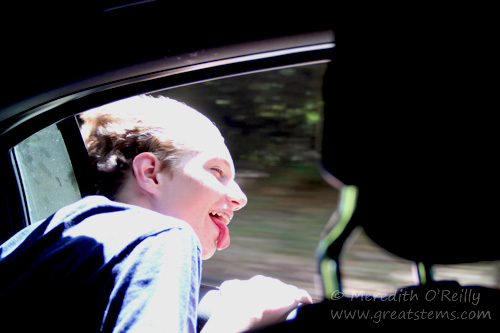
Being among the trees keeps us ever in good spirits. There’s my youngest, silly as he can be. Yes, we’re weird — but happy!
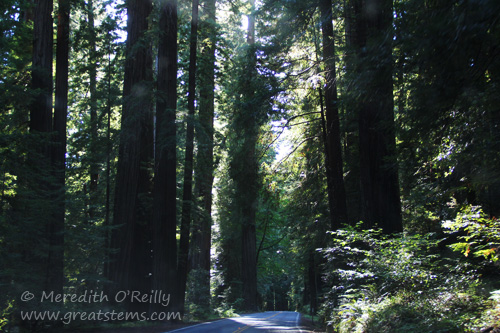
We took a scenic road north, the Avenue of the Giants, which is an older part of Highway 101. This gorgeous route takes you among the many towering trees of Humboldt Redwoods State Park, which contains the largest remaining area of old-growth coastal redwoods in existence today.
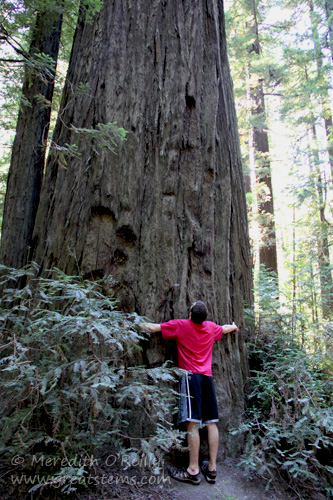
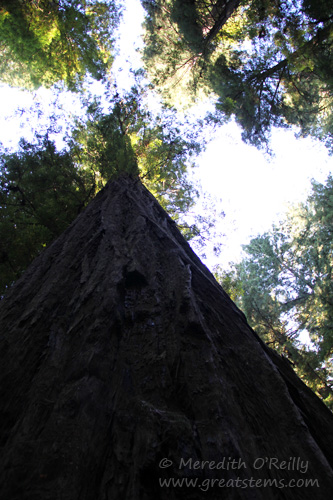 These old trees had much to say, and we tried our best to listen.
These old trees had much to say, and we tried our best to listen.
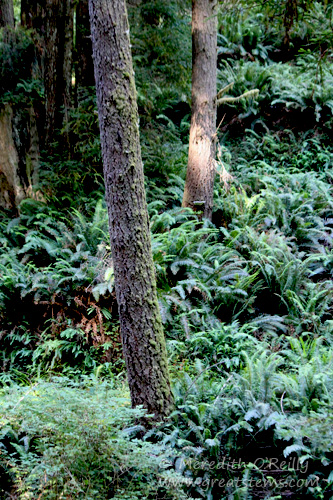
Our destination for the night was Del Norte State Park, where we stayed in the most magical campsite we’ve ever seen. Moss-covered trees, ferns and shrubs creating natural groves, fallen redwoods with walk-able tunnels through them, streaming patches of sunlight, singing birds — this was a place we imagined fairies would live.
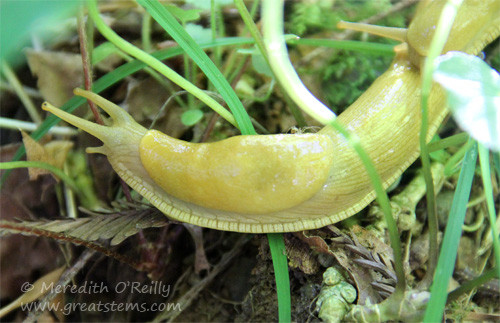 Plus, there were lots of banana slugs, the second-largest type of terrestrial slugs in the world. Those alone made it our kind of place. Expanding our vacation’s nature observation game, the boys and I tried to see who could find the most banana slugs as we hiked among the redwoods the next morning.
Plus, there were lots of banana slugs, the second-largest type of terrestrial slugs in the world. Those alone made it our kind of place. Expanding our vacation’s nature observation game, the boys and I tried to see who could find the most banana slugs as we hiked among the redwoods the next morning.
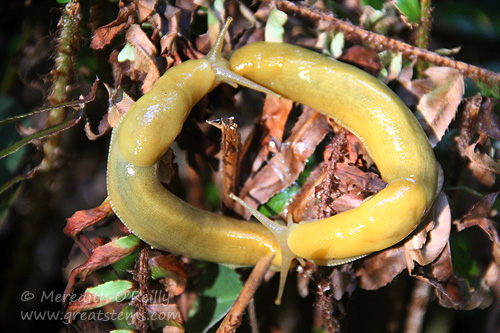
There were lots and lots, keeping us busy. These slugs are extremely valuable in the ecosystem, consuming a lot of detritus and returning nutrients to the soil. They are part of the reason the forest floor there contains such rich soil.
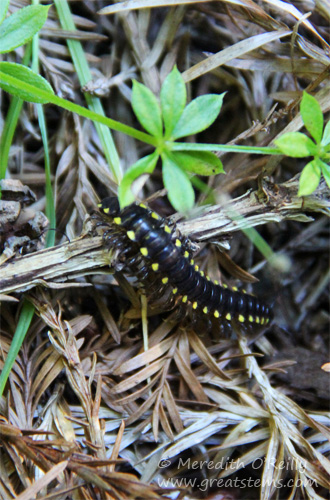 Yellow-spotted millipedes are also important for forest ecology, consuming leaf litter and freeing up the nutrients.
Yellow-spotted millipedes are also important for forest ecology, consuming leaf litter and freeing up the nutrients.
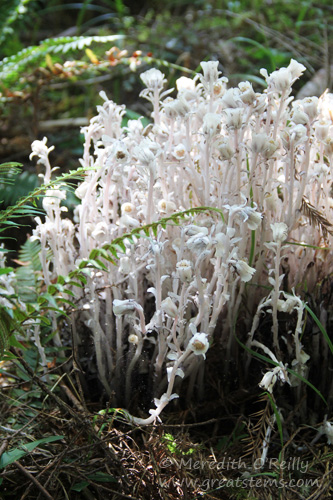
This wildlife, in contrast, is less beneficial and more “gimme gimme.” Ghost Plant (Monotropa uniflora) is so named because its stems, bracts, and flowers lack color. Other common names include Indian Pipes and Corpse Plant. It appears at first as if it were a fungus, but it is a flowering plant (in the blueberry family, believe it or not), one that can grow in very shady woods with rich soil. However, because it lacks chlorophyll, Ghost Plant is heterotrophic, getting its food from outside sources. In this case, it gets its food by being a parasite of mycorrhizal fungi in the forest floor. Since the fungi participate in a nutrient exchange with nearby trees, it does mean that ultimately Ghost Plant does take food from those trees, even if not directly.
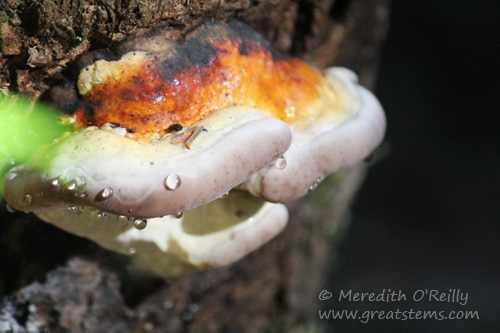
There was plenty of true fungi around, including lots of shelf fungi. This one was my favorite, reminding me much of Little Shop of Horror’s Audrey II. Some shelf fungi, also called bracket fungi, are parasites of the trees on which they live, while others consume dead organic matter. I’m uncertain of this species — could it be Gandoerma applanatum, Artist’s Bracket?
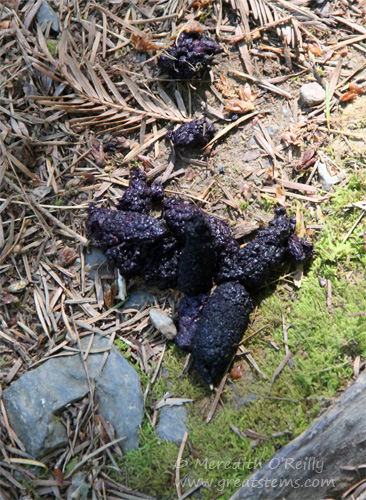
Yes, I take pictures of animal scat. Don’t you? This looks like raccoon to me.
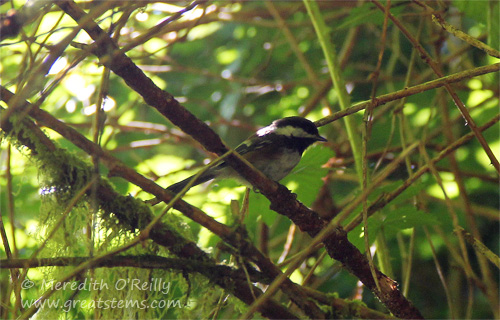 This little Chestnut-backed Chickadee was as feisty as its Carolina cousins.
This little Chestnut-backed Chickadee was as feisty as its Carolina cousins.
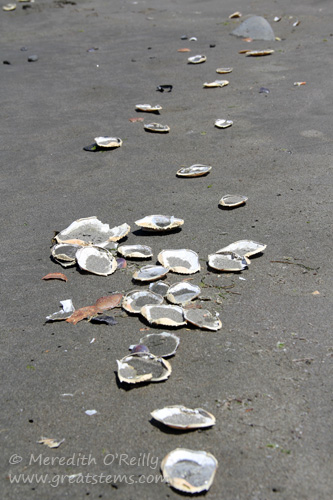 After our morning hike, we headed into Crescent City to get some laundry done, then we drove up Pebble Beach to Point St. George, a northwestern coastal headland of California and a protected site of the ancestral home of the Tolowa Indians. There coastal bluffs are covered with native grasslands and trails lead down to the shore.
After our morning hike, we headed into Crescent City to get some laundry done, then we drove up Pebble Beach to Point St. George, a northwestern coastal headland of California and a protected site of the ancestral home of the Tolowa Indians. There coastal bluffs are covered with native grasslands and trails lead down to the shore.
Up and down the beach, we followed long lines of crab molts, washed ashore as evidence of crab growth and breeding season.

The waves were ever entertaining for all of us. Oh, how I love vacationing with my boys.
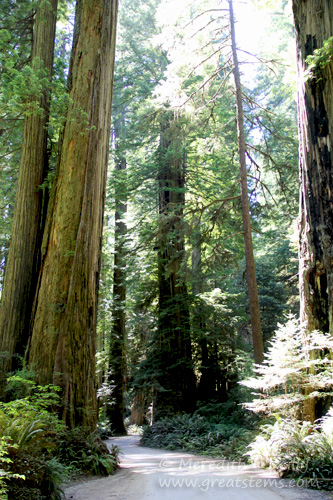
But we weren’t done with redwoods yet. In fact, the biggest were still to come. We detoured back over to Jedediah Smith State Park, part of the Redwoods National Park. 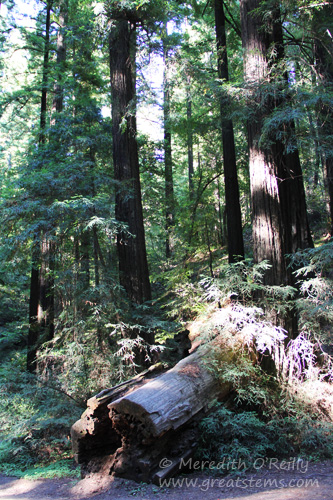
Here we drove on a narrow dirt road that curved around some of the oldest, largest, tallest trees in the world. The rest of the fallen tree above continued on the other side of the road.
We eventually stopped to hike in the vicinity of the Grove of Titans, where record-holding trees exist. Here, many trees are 350 feet or more in height, with a base diameter of about 20 feet. The oldest are about 2,000 years old.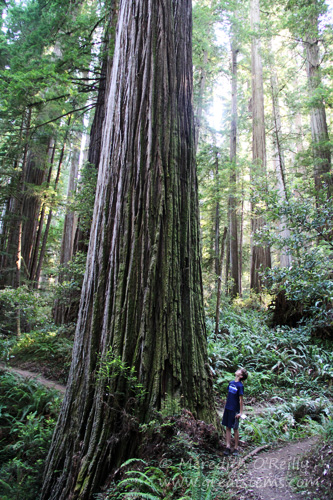
While we happened upon very gigantic trees, visible from the path, that very possibly could have been the titans themselves, we were good and stayed on the trails, respectful of the tree roots and the park rules. The pictures I took of those trees from yards away really didn’t give enough size comparison to do them justice, so instead I’m showing my son near a redwood that is quite large but nowhere near as large as the titans. To see the full tree shown above, click here, or go to the previous post.
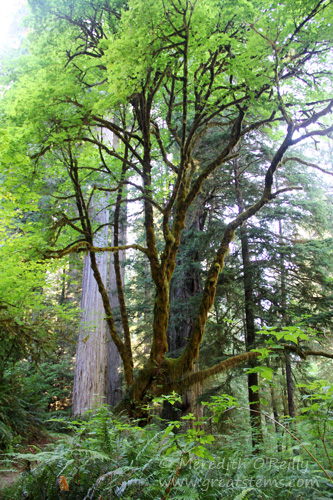
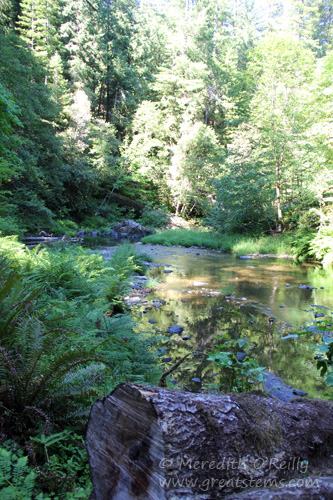
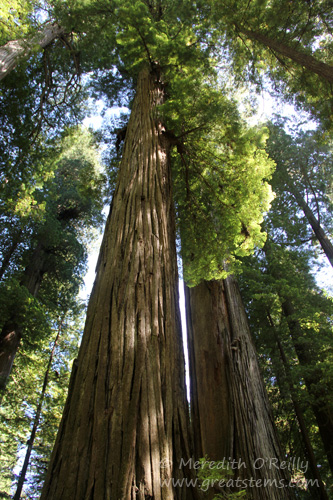 The tranquility of the redwood forest touched our souls. We were very sorry to leave behind these majestic trees, but it was time to move on.
The tranquility of the redwood forest touched our souls. We were very sorry to leave behind these majestic trees, but it was time to move on.
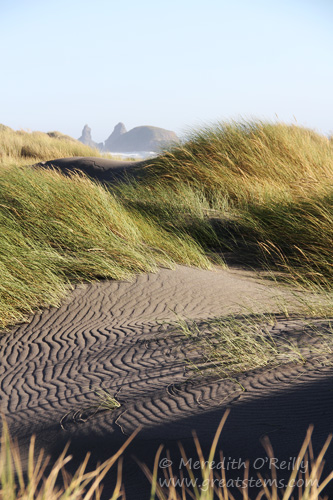
Returning back to the Pacific Ocean, we drove north, saying goodbye to California and entering again the beautiful state of Oregon, this time to follow the coastline. The long beaches, often walled by sandy dunes or tall bluffs, edged cold blue waters that were often dotted with magnificent jagged or well-eroded rocks just off shore.
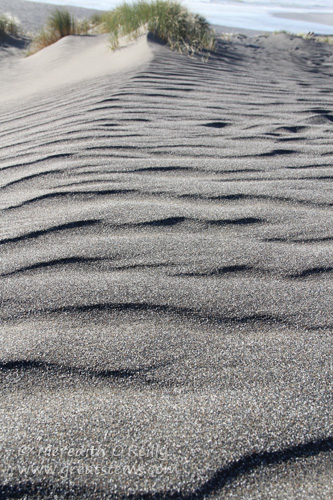
At the Pistol River State Scenic View Point, we enjoyed warm sands and dunes that were fun to traverse and photograph. The wind was strong, and it shaped the dunes into fascinating rippling patterns.
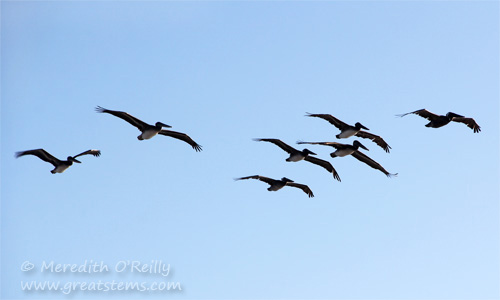
We weren’t the only visitors, however — this area proved to be a resting spot for many migrating pelicans. 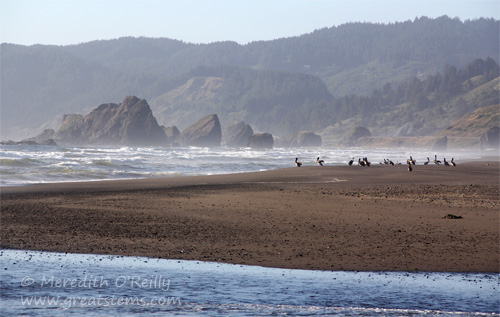
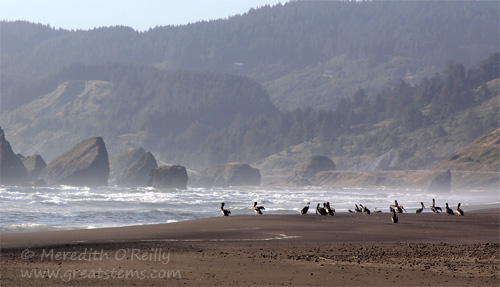
Apparently the rocks in the photos above are great places to visit at low tide, but during high tide, they are nicely surrounded by water and waves. So after enjoying our view from a distance, we trekked back across the dunes and traveled on.
We spent the night at Humbug Mountain State Park in Oregon. It was nice and clean, but not really our favorite campground, given the magnificent places we’d camped at in California. I will say that the hosts and rangers were very nice. But the campsites were too close together for my personal taste — it felt too much like an RV park, rather than a state park. Still, we were able to get a spot without reservations — big plus there!
Next up, more fun along the Oregon coast, though it meant to us that our journey’s end was looming. The farther north we traveled, the closer we got to Washington and our return flight home.
You have made me very homesick. Jedediah Smith State Park is an awesome place. Isn’t the Oregon Coast amazing? Miss it very much.
Sheryl, I already can’t wait to go back. When you travel a long distance in a vacation, you only get to see places for a short time. I want to go back and really take the time to absorb my surroundings and explore.
Pingback: Pacific Journey: Up the Oregon Coast | Great Stems
The “ghost plant” was a nice find. Don’t see very many of those: not quite like Trillium abundance.
Maybe the scat is racoon. Otherwise small bear. Found bear scat near the Smith River, with red in it. Apparently the bears eat apples in the area when they wander to properties.
RE the grove of titans. the largest record size redwoods are elsewhere. Wikipedia has a somewhat updated list.
Cheers,
MDV
Thanks for the info, M.D.!